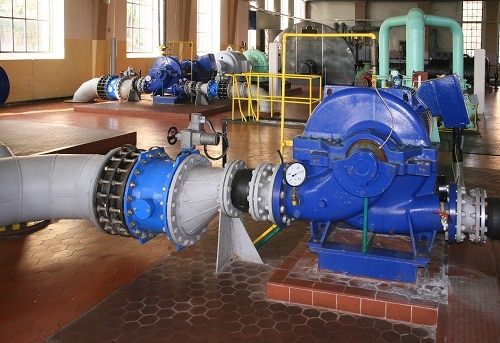We import the finest pumps from all over the world into Australia. To the casual observer, it may seem that we could stand to handle some cheaper pumps that can “do the job just as well” as the high quality pumps we offer.
But the reality is that cheap pumps don’t “do the job just as well.” As a matter of fact, any shortcut in design of a pump system, including the use of cheap pumps to “save money,” can have dire consequences for your bottom line.
A pump system must be carefully conceived, installed perfectly and maintained with diligence. Anything less can cost thousands or even millions of dollars due to pump failure, depending upon the size and scope of your operation. Here is an example of how shortcuts can go very wrong, costing a lot of money and downtime.

Pump Failure in New Zealand
At a geothermal power station in New Zealand, a hotwell operation installed four large, vertical, single-stage pumps in canisters. The pumps had 882.5 kW motors, a capacity of 170,000 liters per minute at 23 metres and operating speeds of 590 rpm.
Due to excessive vibration and noise, one of the pumps had to be removed in 7 weeks. When the pump was inspected, it was found to have a broken impeller vane, severe impeller-vane cavitation, line/bearings wear and impeller/liner rub. We won’t go further into the more minute details, but it’s obvious some shortcuts were taken.
When a root-cause analysis was done, it was found that the pump supplier had never used this pump in the application for which it was used, inside a canister.
If both sides had done their due diligence, they would have known that the sump-intake design needed to be subjected to a computational fluid dynamics (CFD) analysis. This was finally done after the faulty pump was taken out and it was determined that the design caused flow bias towards the suction inlet pipe.
More shortcuts were revealed during the root-cause investigation. There was an error in machine concentricity between a suction bearing and its liner. That caused damage to both the liner and the impeller. Due to poor casting, an obviously inferior product sustained up to 10 mm of cavitation in some locations and a broken blade vane.
The problem was solved via some expensive and time-consuming modifications and the system is still working two years later. Ultimately, the failure was due to a number of factors. There was a lack of communication during the design process. This resulted in missed steps and inappropriate equipment.
The poor quality of the pump was solely the fault of the manufacturer, but the project manager certainly has to accept some of the responsibility for buying equipment from an inferior manufacturer to save money. There should have been more computerised testing of the system during the design phase.
What it Means to You
We are going to explain in greater detail, but there is one major takeaway from this: the money you “save” when you buy from an untested or inferior manufacturer can cost you much more than it would have cost to buy high-quality equipment in the first place.
Simply put, you cannot afford to take shortcuts such as the “price point” mentality when you are creating a pumping system for your operation. We have supplied pumping systems to a number of large accounts in segments such as the wastewater, mining, power, hospitality and medical industries. Whether your operation is large or small, you must have high quality pumps and sustainable design.
Call Pump Solutions Australasia Today
Whether you need a custom design for a large operation or a few replacement dewatering pumps, call Pump Solutions Australasia. We have gone all over the world to find the very best pump manufacturers in any given segment. We have the best customer service in Australia. For larger operations, we can even find dedicated personnel from the manufacturers to help you with your design.
Call us today: 08 9408 1544.
